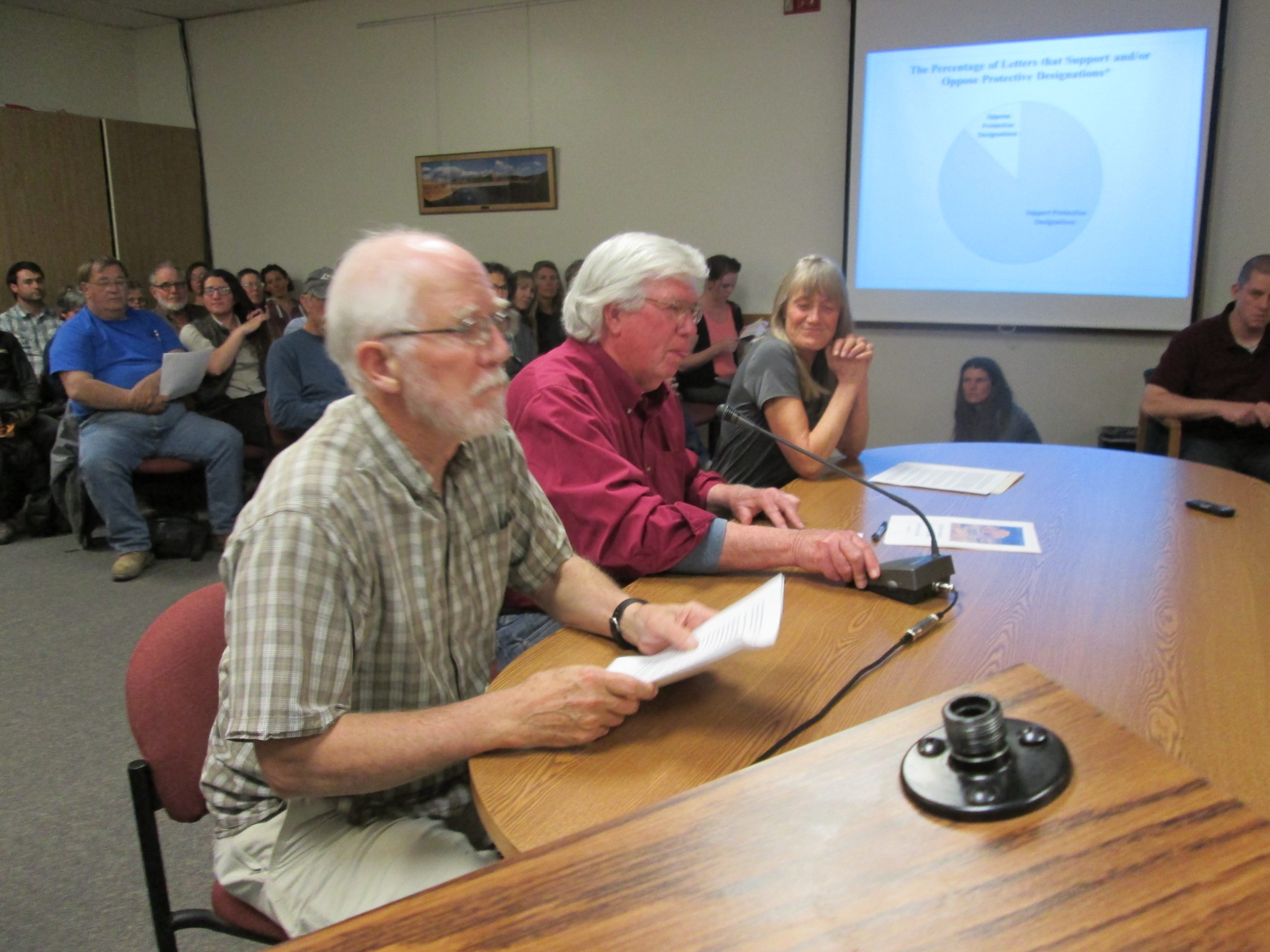Some information may be outdated.
Ninety percent of the Grand County residents who submitted letters of input about public land designations want to protect public lands in the county, according to a citizens’ analysis of the letters.
The Grand County Council received 182 letters with 253 signatures in response to a request by the council for public input regarding the Public Lands Initiative spearheaded by U.S. Rep. Rob Bishop (R-Utah). An ad hoc citizens’ committee, that included a statistician, categorized, tabulated and presented the data to the council on Tuesday, March 18.
In November 2013, the council established a three-member study committee to develop recommendations for long-term public-lands designations in Grand County to submit to Bishop.
The study committee, comprised of council members Rory Paxman, Lynn Jackson and Jim Nyland, requested public input be submitted in the form of written letters. The public-comment period ended on January 30.
“When the letters were posted online on the county Web site, a couple of us just thought it would be interesting to see what folks have to say,” county resident Bill Rau said. “As we read through several of the letters, we realized it was really quite substantial what people were putting into their letters.”
Rau and others decided to create a citizens’ committee to analyze the letters.
“We were pretty clear at the beginning it was going to take awhile to go through all of the letters and do a good job of analyzing them,” Rau said.
In the end, 10 residents volunteered their time over a six-week period to read the letters and gather data. Bob O’Brien, who taught statistics and research methods at the University of Oregon for over 30 years, determined the committee’s methods for organizing and presenting the data. The committee synthesized its data in a report titled “A Citizens’ Review of Public Lands Letters Grand County, Utah.”
“These are the letters people sent in for this particular request, so how representative they are is always an open question,” O’Brien said. “But the impressive thing about these letters is how strong the ‘let’s protect the land’ theme was that came through.”
People’s reasons for wanting to protect the land varied, “but usually involved deep appreciation of the benefits offered by public lands: clean air, protection of watersheds, major contributions to the local economy, the uniqueness of the land, and a legacy for future generations to enjoy,” the report states.
According to the report, tourism and the economy account for the most cited reasons for protection, mentioned in 59.89 percent of the letters. Health and the environment were the second most cited reasons, mentioned in 57.69 percent.
The report lists nearly 100 specific areas mentioned by letter writers as areas worth protecting. Even though some areas were mentioned in as many as 20 percent of the letters, O’Brien said, the committee did not want to get into ranking locations. Because a location is lesser known, and thus wasn’t mentioned as frequently, “that doesn’t mean it’s not worth preserving,” O’Brien said.
The report also breaks down the reasons that just over 13.19 percent of letters gave for opposing public-lands protections. The numbers for opposing and supporting protective designations tally to slightly greater than 100 percent because some letters expressed both opposition to, and support for, protective designations.
The two most cited reasons for opposing protection for public lands were to keep a diverse economy, and maintain public access to roads and four-wheel drive routes,” the report states, showing that less than 10 percent of the letters mentioned these reasons.
Many letter writers also brought up the issue of extraction. While 8.79 percent of the letters mentioned “responsible extraction” as another reason for opposing protective land designations, “50 percent of citizens explicitly said they wanted no new extraction or limits on extractive industries in the county,” the report stated.
The 182 letters, “along with the 2012 Grand County General Plan, are the most comprehensive views of citizen attitudes that are available,” Rau said. “It is our expectation that the full council will take into account the written statements of county citizens who wrote letters with thoughtfulness, passion and care.”
Council member Gene Ciarus said that he read every one of the letters. However, study committee members did not respond to inquiries about what methods they were using to organize and translate the data into the maps they will present for consideration to County citizens and to Bishop.
In a February press release, the council said it planned to hold a public meeting sometime “in mid- to late-March at the Grand Center” to present its recommended land-designation maps to the public. As of press time, no dates for that meeting had been set.
County residents will have an additional time period after the meeting for written comments on the alternative maps drafted by the council study committee. The full council will then review the public comments and alternatives suggested by the council study committee. Then, during an open, public meeting, the council will vote on a preferred alternative to forward to Bishop for consideration in his proposed legislation.
According to the county’s press release, Bishop has indicated he will present initial legislation later this summer.
Group analyzed 182 letters received regarding Public Lands Initiative
A Citizens’ Review of Public Lands Letters Grand County, Utah can be accessed online at jmp.sh/ljjLSOL
“These are the letters people sent in for this particular request, so how representative they are is always an open question. But the impressive thing about these letters is how strong the ‘let’s protect the land’ theme was that came through.”
Appreciate the coverage? Help keep local news alive.
Chip in to support the Moab Sun News.





